british
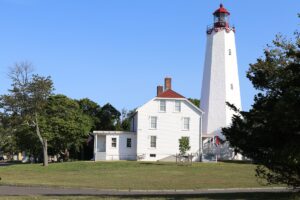 A lighthouse is by definition, a tall building set on the coast with a light in its tower to warn ships of the presence of dangerous rocks or shores. I have long loved lighthouses…their history, the ships they protected, and the place you find them. These days, there might not be as much need for lighthouses, because of GPS, but GPS can fail, computers can crash, and some solar activity can affect GPS too. There are lots of reasons why it can fail, so these days, lighthouses might be considered a…backup plan. You never know when they might be needed, and that is not the time to find out that you don’t have them.
A lighthouse is by definition, a tall building set on the coast with a light in its tower to warn ships of the presence of dangerous rocks or shores. I have long loved lighthouses…their history, the ships they protected, and the place you find them. These days, there might not be as much need for lighthouses, because of GPS, but GPS can fail, computers can crash, and some solar activity can affect GPS too. There are lots of reasons why it can fail, so these days, lighthouses might be considered a…backup plan. You never know when they might be needed, and that is not the time to find out that you don’t have them.
The lighthouse at Sandy Hook, in what is now New Jersey, was put in use on June 11, 1764. It was needed badly, and the Provincial Congress of New York orchestrated two lotteries to raise money for its construction. As with many projects, things moved slowly. The lighthouse was first suggested for Sandy Hook nearly a century before, but it was finally initiated by Colonial Governor Edmund Andros. It finally became a priority 43 New York merchants, lost 20,000 pounds of sterling from shipwrecks in  early 1761. Suddenly, it was really important. to protect those ships and their cargo. In the 27 months that the light house at Sandy hook stood, she had protected many ships.
early 1761. Suddenly, it was really important. to protect those ships and their cargo. In the 27 months that the light house at Sandy hook stood, she had protected many ships.
Then, on March 6, 1776, a committee of the New York Provincial Congress instructs Major William Malcolm to dismantle the Sandy Hook lighthouse. The territory was in dispute, and Major Malcolm’s task was to prevent the lighthouse from helping the British to reach New York City. The Congress wanted Malcolm to remove the lens and lamps so that the lighthouse could no longer warn ships of the rocky shore. Major Malcolm succeeded. Colonel George Taylor reported six days later that Malcolm had “given him eight copper lamps, two tackle falls and blocks, and three casks, and a part of a cast of oil from the dismantling of the beacon.” While the removal would most certainly mean the loss of ships and lives, it was deemed collateral damage, even if some of the ships were friendlies.
While the lighthouse removal was a success, it did not keep the British from invading New York. They were soon 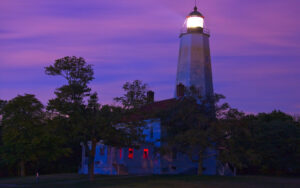 able to put the lighthouse back into service by installing lamps and reflectors. The Patriots attempted to knock the light out again on June 1, 1776, by placing cannon on boats and attempting to blow away the British equipment. They managed some damage before being chased away. The new states of New Jersey and New York bickered over ownership of the lighthouse, until the federal government assumed control of all US lighthouses in 1787. As of 1996, the Sandy Hook lighthouse, the oldest original lighthouse in the United States, passed into the jurisdiction of the National Park Service. I’m glad it survived all that turmoil. It would be sad if it was lost forever.
able to put the lighthouse back into service by installing lamps and reflectors. The Patriots attempted to knock the light out again on June 1, 1776, by placing cannon on boats and attempting to blow away the British equipment. They managed some damage before being chased away. The new states of New Jersey and New York bickered over ownership of the lighthouse, until the federal government assumed control of all US lighthouses in 1787. As of 1996, the Sandy Hook lighthouse, the oldest original lighthouse in the United States, passed into the jurisdiction of the National Park Service. I’m glad it survived all that turmoil. It would be sad if it was lost forever.
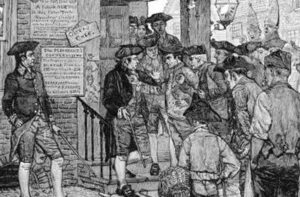
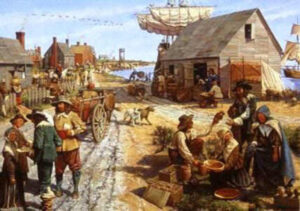 If you travel to a different area of the country or even other English-speaking areas of the world, you will find that here are different accents and even that words are used differently. Still, just because you are visiting or move to those places, doesn’t mean that you will immediately take on those accents, or their use of words. Nevertheless, when you move to a different region, your use of the language does immediately begin to evolve, whether you realize it or not, and whether it is intentional or not. The first Englishmen to set foot on American soil with the intent to colonize the land were no exception. The language began to evolve almost immediately….and it remains a fluid, almost living process to this day. “Americanisms” have been created or changed from other English terms to produce a language that very much differs from our forefathers, signifying our uniqueness and independence.
If you travel to a different area of the country or even other English-speaking areas of the world, you will find that here are different accents and even that words are used differently. Still, just because you are visiting or move to those places, doesn’t mean that you will immediately take on those accents, or their use of words. Nevertheless, when you move to a different region, your use of the language does immediately begin to evolve, whether you realize it or not, and whether it is intentional or not. The first Englishmen to set foot on American soil with the intent to colonize the land were no exception. The language began to evolve almost immediately….and it remains a fluid, almost living process to this day. “Americanisms” have been created or changed from other English terms to produce a language that very much differs from our forefathers, signifying our uniqueness and independence.
Of course, the people didn’t notice the changes right away, but by 1720, the English colonists began to notice that their language was quite different from that spoken in their Motherland. I’m sure they wondered just how that came to be? Basically, when you hear new “slang” words, and people don’t hear the accents spoken as well, the whole dynamic of the language changes. Also, very formal words like “thee, thou, and such” might become too cumbersome and so they are discarded. Everyone in the colonies knew that English would be our native language by 1790, because when the United States took its first census, there were four million Americans, 90% of whom were descendants of English colonists. So, it made perfect sense.
Nevertheless, it would not be the same as that spoken in Great Britain. The reasons are varied, but the most obvious reason was the sheer distance from England. The main way the language evolved was that over the years, many words were borrowed from the Native Americans, as well as other immigrants from France, Germany, Spain, and other countries. In addition, words that became obsolete “across the pond” continued to be utilized in the colonies. In other cases, words simply had to be created in order to explain the unfamiliar landscape, weather, animals, plants, and living conditions that these early pioneers encountered. By 1790 it was obvious that American English would be a very different language that British English.
The first “official” reference to the “American dialect” was made in 1756 by Samuel Johnson, a year after he published his Dictionary of the English Language. Johnson’s use of the term “American dialect” was not meant to simply explain the differences but rather, was intended as an insult. This “new” language was called “barbarous” and referred to our “Americanisms” as barbarisms. Because of the dissention between England and the Colonies, the British sneering at our language continued for more than a century after the Revolutionary War. They laughed and condemned as unnecessary, hundreds of American terms and phrases, but to our newly independent Americans, they were proud of their “new” American language and considered it to be another badge of independence. In 1789, Noah Webster wrote in his Dissertations on the English Language, “The reasons for American English being different than English English are simple…As an independent nation, our honor requires us to have a system of our own, in language as well as government.” In the eyes of the Colonists, that settled the matter, and when the United States was formed, the new nation was proud to be separated for the “Motherland” and would have it no other way.
Our leaders, including Thomas Jefferson and Benjamin Rush, agreed — it was not only good politics, but it was also sensible. The most atrocious changes to the British were the heavy use of contractions such as ain’t, can’t, don’t, and couldn’t. The feelings of the “rest of the world” didn’t matter to Americans, and the language changed even more during the western movement as numerous Native American and Spanish words became an everyday part of our language. The evolution of the American language continued into the 20th century and really continues even to this day. After World War I, when Americans were in a patriotic and anti-foreign mood, the state of Illinois went so far as to pass an act making the official language of the state the “American language.” In 1923, in the State of Illinois General Assembly, they passed the act stating in part, “The official language of the State of Illinois shall be known hereafter as the ‘American’ language and not as the ‘English’ 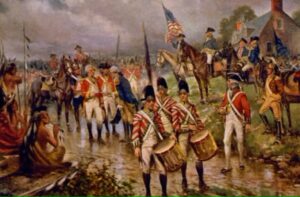
 language. A similar bill was also introduced in the US House of Representatives the same year but died in committee. Ironically, after centuries of forming our ‘own’ language, the English and American versions are once again beginning to blend as movies, songs, electronics, and global traveling bring the two ‘languages’ closer together.”
language. A similar bill was also introduced in the US House of Representatives the same year but died in committee. Ironically, after centuries of forming our ‘own’ language, the English and American versions are once again beginning to blend as movies, songs, electronics, and global traveling bring the two ‘languages’ closer together.”
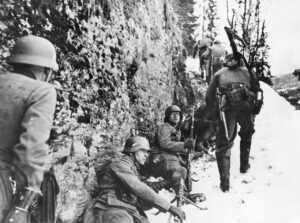 During the largely unsuccessful Norwegian Campaign of World War II, the Allies were in a fight to stop the Germans from fully occupying Norway, but it didn’t work in the end. The Norwegian campaign was carried out from April 8, 1940 to June 10, 1940, and involved the attempt by Allied forces to defend northern Norway coupled with the resistance of the Norwegian military to the country’s invasion by Nazi Germany.
During the largely unsuccessful Norwegian Campaign of World War II, the Allies were in a fight to stop the Germans from fully occupying Norway, but it didn’t work in the end. The Norwegian campaign was carried out from April 8, 1940 to June 10, 1940, and involved the attempt by Allied forces to defend northern Norway coupled with the resistance of the Norwegian military to the country’s invasion by Nazi Germany.
The Norwegian Campaign was planned as Operation Wilfred and Plan R 4, prior to the actual German attack, which the Allies knew was imminent, but had not yet happened. On April 4th, the battlecruiser HMS Renown set out from Scapa Flow for the Vestfjorden with twelve destroyers. The Royal Navy and the 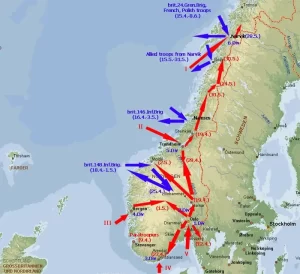 Kriegsmarine met at the First Battle of Narvik on April 9 – 10. The British forces conducted the Åndalsnes landings on April 13, thereby putting everything in place for the actual operation. Germany’s strategic reason for wanting Norway was to seize the port of Narvik and guarantee the delivery of iron ore needed for German steel production. In any war, steel is necessary for much of the weaponry.
Kriegsmarine met at the First Battle of Narvik on April 9 – 10. The British forces conducted the Åndalsnes landings on April 13, thereby putting everything in place for the actual operation. Germany’s strategic reason for wanting Norway was to seize the port of Narvik and guarantee the delivery of iron ore needed for German steel production. In any war, steel is necessary for much of the weaponry.
During one part of that campaign, in an air fight over Norway, a British fighter took down a German plane over a densely wooded area. Unfortunately, the British aircraft crashed as well. As it turns out, both crews survived the crashes, and while trying to get to a safe place, they encountered each other in the wilderness. In most situations, this could have been bad for one or both of the crews, but even though they were struggling against a language barrier, the rival airmen agreed not to turn on each other and instead, to team up in order to find 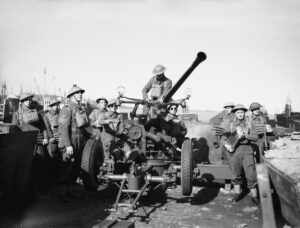 safety. They stayed in an abandoned hotel and shared breakfast. It wasn’t peace exactly, but they formed an uneasy truce, while they waited to see which side would show up to help first.
safety. They stayed in an abandoned hotel and shared breakfast. It wasn’t peace exactly, but they formed an uneasy truce, while they waited to see which side would show up to help first.
Instead of the British or the Germans, it was a Norwegian ski patrol that showed up to rescue the British soldiers, and of course, to take the Germans as POWs. While that one battle seemed to indicate that the British were headed for a victory over the Germans, that was not to be the case. The Germans did finally take over Norway in its entirety. Of course, as we all know, one battle is not a very good indication of who will win the war, and in the end, it was Germany that took a great fall, losing the entirety of World War II.
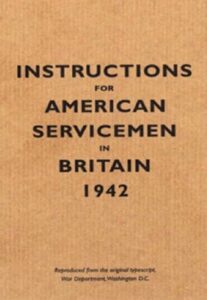
 In every branch of service, and every war, the US servicemen are given a handbook. The book is filled with useful information, meant to make the transition from civilian to soldier a successful one, even if it is not an easy one. No young civilian preparing to go to war really has a good idea of what they are getting into. I suppose more of them do these days, than their World War and prior wars era counterparts. Nevertheless, each of them is proceeding head on into a massive reality check. The handbook can be a sobering little book, especially when the new soldier reads the chapter that recommends the writing of a will. The need for a Last Will and Testament will become crystal clear when the soldier sees his (or her) first battle. The sight of dead bodies takes away any misconception the soldier might have of their own mortality, and the possibility that they may have been given a one-way ticket to this battle.
In every branch of service, and every war, the US servicemen are given a handbook. The book is filled with useful information, meant to make the transition from civilian to soldier a successful one, even if it is not an easy one. No young civilian preparing to go to war really has a good idea of what they are getting into. I suppose more of them do these days, than their World War and prior wars era counterparts. Nevertheless, each of them is proceeding head on into a massive reality check. The handbook can be a sobering little book, especially when the new soldier reads the chapter that recommends the writing of a will. The need for a Last Will and Testament will become crystal clear when the soldier sees his (or her) first battle. The sight of dead bodies takes away any misconception the soldier might have of their own mortality, and the possibility that they may have been given a one-way ticket to this battle.
While many of the things contained in the handbook are sobering and even quite scary for the soldiers, there are some things contained therein that have a much more practical usage, and a few that looking back, anyway, are just a little bit funny. One such tidbit contained in the US servicemen’s World War II handbook was the simple statement that, “The British don’t know how to make a good cup of coffee. You don’t know how to make a good cup of tea—it’s an even swap.” I suppose that statement is true, at least as it pertains to the fact that British “bad coffee” is an even swap with US “bad tea.” I don’t think they US government was trying to “bad-mouth” the Brits, but rather that they were simply stating a fact. If the men were in a British camp, they simply shouldn’t ask for a cup of coffee, because they would be sorely disappointed in what they were served.
Like the warning labels of items these days, like not to shower with a running blow dryer, or to shut off the engine before trying to remove the fan belt on your car, the point was to make the reader aware of the ramifications of making such bad choices. Still, some “warnings” make more sense than others…or do they? While the electricity problem of the wet running blow dryer and the finger removal outcome of putting one’s 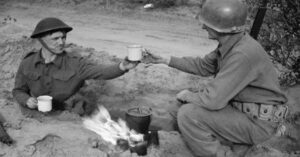 hand out to touch a fast-moving fan belt, seem like rather stupid wisdom (is there is such a phrase), the idea that a person would automatically make a bad cup of coffee, simply because they are British, seems equally ridiculous. Nevertheless, the US servicemen were warned to expect “bad coffee” from the British, so that they were prepared to either drink tea with the Brits, or swallow down the offending coffee so as not to offend the Brits. I’m sure that much of the rest of the handbook contained valuable information, but it is possible that the most valuable information contained in the World War II US servicemen’s handbook, was intended to avoid the notion that the Brit might have poisoned them with the British coffee.
hand out to touch a fast-moving fan belt, seem like rather stupid wisdom (is there is such a phrase), the idea that a person would automatically make a bad cup of coffee, simply because they are British, seems equally ridiculous. Nevertheless, the US servicemen were warned to expect “bad coffee” from the British, so that they were prepared to either drink tea with the Brits, or swallow down the offending coffee so as not to offend the Brits. I’m sure that much of the rest of the handbook contained valuable information, but it is possible that the most valuable information contained in the World War II US servicemen’s handbook, was intended to avoid the notion that the Brit might have poisoned them with the British coffee.
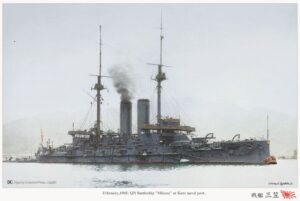 It is not usually my habit to talk about the spectacular ships built by our nation’s enemies, but IJN Mikasa might be a worthy exception. The Mikasa is a “pre-dreadnought” battleship built for the Imperial Japanese Navy (IJN) in the late 1890s and is the only ship of her class. I didn’t know what a “pre-dreadnought” ship was, so I looked into it. “Pre-dreadnoughts were battleships built before 1906, when HMS Dreadnought was launched. Dreadnoughts were more powerful battleships that followed the design of HMS Dreadnought and so made pre-dreadnoughts obsolete.” The ship displaced over 15,000 long tons, with a crew of over 800 men.
It is not usually my habit to talk about the spectacular ships built by our nation’s enemies, but IJN Mikasa might be a worthy exception. The Mikasa is a “pre-dreadnought” battleship built for the Imperial Japanese Navy (IJN) in the late 1890s and is the only ship of her class. I didn’t know what a “pre-dreadnought” ship was, so I looked into it. “Pre-dreadnoughts were battleships built before 1906, when HMS Dreadnought was launched. Dreadnoughts were more powerful battleships that followed the design of HMS Dreadnought and so made pre-dreadnoughts obsolete.” The ship displaced over 15,000 long tons, with a crew of over 800 men.
While she might not have been as powerful, IJN Mikasa was nevertheless a well-built ship, that was able to withstand more than most ships of her time. Named after Mount Mikasa in Nara, Japan, she served as the flagship of Vice Admiral Togo Heihachiro throughout the Russo-Japanese War of 1904–1905. That war included the Battle of Port Arthur, which occurred on the second day of the war, as well as the Battles of the Yellow Sea and Tsushima. Just a few days after the Russo-Japanese War ended, Mikasa’s magazine (a ship’s magazine is where the powder and shells are stored) suddenly exploded and sank the ship. The explosion killed 251 men. Shortly before the Mikasa’s fatal accident, the ship had been involved in the 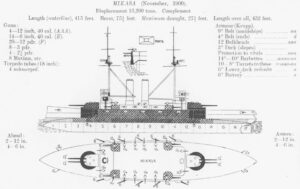 Battle of Tsushima (May 27, 1905), during which she had shrugged off over 40 shell strikes from heavy Russian naval guns! In that battle 113 of her crew were killed or injured. While such an event would usually mean the end of a ship, IJN Mikasa was salvaged, and while her repairs took over two years to complete, she went on to serve as a coast-defense ship during World War I, and she supported Japanese forces during the Siberian Intervention in the Russian Civil War. Ironically, in 1912 a despondent sailor among her crew tried to blow the ship up once again while the ship was anchored at Kobe. In the end the ship served until 1923, after being pulled up from the drink, repaired, and recommissioned.
Battle of Tsushima (May 27, 1905), during which she had shrugged off over 40 shell strikes from heavy Russian naval guns! In that battle 113 of her crew were killed or injured. While such an event would usually mean the end of a ship, IJN Mikasa was salvaged, and while her repairs took over two years to complete, she went on to serve as a coast-defense ship during World War I, and she supported Japanese forces during the Siberian Intervention in the Russian Civil War. Ironically, in 1912 a despondent sailor among her crew tried to blow the ship up once again while the ship was anchored at Kobe. In the end the ship served until 1923, after being pulled up from the drink, repaired, and recommissioned.
IJN Mikasa was decommissioned on September 23, 1923, following the Washington Naval Treaty of 1922. At that time, she was scheduled for destruction, but at the request of the Japanese government, each of the signatory countries to the treaty agreed that Mikasa could be preserved as a memorial ship. The agreement required that her hull be encased in concrete. On November 12, 1926, Mikasa was opened for display in Yokosuka in the presence of Crown Prince Hirohito and Togo. Unfortunately, the ship deteriorated under the 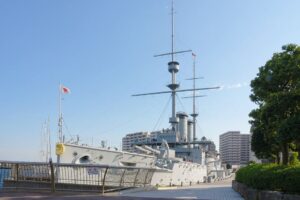 control of the occupation forces after the surrender of Japan in 1945. Finally, in 1955, American businessman John Rubin, who had formally lived in Barrow, England, wrote a letter to the Japan Times about the state of the ship. His letter served as the catalyst for a new restoration campaign. The Japanese public, who were widely onboard with the idea, supported the project, as did Fleet Admiral Chester W Nimitz. The ship was once again restored, and the museum version reopened in 1961. On August 5, 2009, IJN Mikasa was repainted by sailors from USS Nimitz, and she is now the only surviving example of a “pre-dreadnought” battleship in the world. IJN Mikasa is located in the town of its construction, Barrow-in-Furness, near Mikasa Street on Walney Island.
control of the occupation forces after the surrender of Japan in 1945. Finally, in 1955, American businessman John Rubin, who had formally lived in Barrow, England, wrote a letter to the Japan Times about the state of the ship. His letter served as the catalyst for a new restoration campaign. The Japanese public, who were widely onboard with the idea, supported the project, as did Fleet Admiral Chester W Nimitz. The ship was once again restored, and the museum version reopened in 1961. On August 5, 2009, IJN Mikasa was repainted by sailors from USS Nimitz, and she is now the only surviving example of a “pre-dreadnought” battleship in the world. IJN Mikasa is located in the town of its construction, Barrow-in-Furness, near Mikasa Street on Walney Island.
 In any war, there must be a nation’s first casualty. World War I could be no different. On March 28, 1915, the first American citizen was killed in the eighth month of World War I. The United States didn’t even enter the war until April 6, 1917. Nevertheless, Leon Thrasher, who was a 31-year-old mining engineer and a native of Massachusetts, drowned when a German U-Boat, the U-28 torpedoed a cargo-passenger ship the British RMS Falaba, a West African steamship, on which Thrasher was a passenger. The sinking became known as “The Thrasher Incident.” The RMS Falaba was on its way from Liverpool to West Africa, off the coast of England. Of the 242 passengers and crew on board RMS Falaba, 104 drowned. Thrasher was employed on the Gold Coast in British West Africa, and on March 28, 1915, he was on the RMS Falaba, as a passenger, returning to his post, following a trip to England.
In any war, there must be a nation’s first casualty. World War I could be no different. On March 28, 1915, the first American citizen was killed in the eighth month of World War I. The United States didn’t even enter the war until April 6, 1917. Nevertheless, Leon Thrasher, who was a 31-year-old mining engineer and a native of Massachusetts, drowned when a German U-Boat, the U-28 torpedoed a cargo-passenger ship the British RMS Falaba, a West African steamship, on which Thrasher was a passenger. The sinking became known as “The Thrasher Incident.” The RMS Falaba was on its way from Liverpool to West Africa, off the coast of England. Of the 242 passengers and crew on board RMS Falaba, 104 drowned. Thrasher was employed on the Gold Coast in British West Africa, and on March 28, 1915, he was on the RMS Falaba, as a passenger, returning to his post, following a trip to England.
The sinking, brought with it a claim from the Germans that the submarine’s crew had 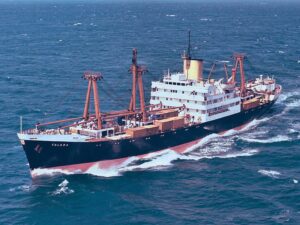 followed all protocol when approaching RMS Falaba. The Germans said that they gave the passengers ample time to abandon ship, and that they fired only when British torpedo destroyers began to approach to give aid to the Falaba. Of course, the British official press report of the incident disagreed, claiming that the Germans had acted improperly, “It is not true that sufficient time was given the passengers and the crew of this vessel to escape. The German submarine closed in on the Falaba, ascertained her name, signaled her to stop, and gave
followed all protocol when approaching RMS Falaba. The Germans said that they gave the passengers ample time to abandon ship, and that they fired only when British torpedo destroyers began to approach to give aid to the Falaba. Of course, the British official press report of the incident disagreed, claiming that the Germans had acted improperly, “It is not true that sufficient time was given the passengers and the crew of this vessel to escape. The German submarine closed in on the Falaba, ascertained her name, signaled her to stop, and gave 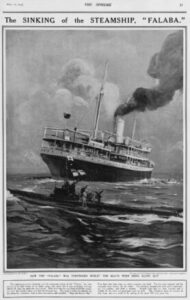 those on board five minutes to take to the boats. It would have been nothing short of a miracle if all the passengers and crew of a big liner had been able to take to their boats within the time allotted.”
those on board five minutes to take to the boats. It would have been nothing short of a miracle if all the passengers and crew of a big liner had been able to take to their boats within the time allotted.”
The sinking of RMS Falaba, and Thrasher’s subsequent death, was mentioned again in a memorandum sent by the US government, which was drafted by President Woodrow Wilson himself and addressed to the German government after the German submarine attack on the British passenger ship Lusitania on May 7, 1915, in which 1,201 people were drowned, including 128 Americans. President Wilson’s note was clearly a warning, calling for the US and Germany to come to a full and complete understanding as to the grave situation which had resulted from the German policy of unrestricted submarine warfare. In response to the warning, Germany abandoned the policy shortly thereafter. However, the policy abandonment was reversed in early 1917, and that was the final straw that put the United States into World War I on April 6, 1917.
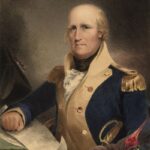
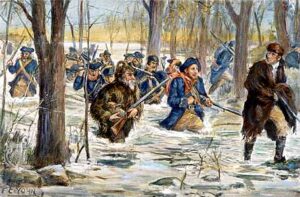 The British tried very hard to keep the United States colonies of Great Britain. The odds were in their favor, but they badly misjudged the determination of the early pioneers of this country. The Revolutionary War would bear that out. On February 5, 1779, George Rogers Clark departed Kaskaskia on the Mississippi River with a force of approximately 170 men, including Kentucky militia and French volunteers. Their goal was to take Fort Sackville (Fort Vincennes, at that time), British garrison under Lieutenant-Governor Henry Hamilton. The men traveled across what is now the state of Illinois, a journey of about 180 miles, much of it covered by deep and icy flood water until they reached Fort Sackville at Vincennes, in what is now Indiana. They reached the Embarras River on February 17th, placing them only 9 miles from Fort Sackville. Unfortunately, the river was too high to cross there, so they followed the Embarrass River down to the Wabash River, where the next day they began to build boats. Moral was low, because they had been without food for the last two days, and Clark struggled to keep his men from deserting. Clark later wrote that “I conducted myself in such a manner that caused the whole to believe that I had no doubt of success, which kept their spirits up.” He really had no choice, no matter what his true feelings were on the matter. Still, in a February 20 entry in Captain Bowman’s Field Journal, he describes the men in camp as “very quiet but hungry; some almost in despair; many of the creole volunteers talking of returning.” The situation grew more bleak by the day, and on February 22, Bowman reports that they still have “No provisions yet. Lord, help us!” and that “Those that were weak and famished from so much fatigue went in the canoes” as they marched towards toward Vincennes.
The British tried very hard to keep the United States colonies of Great Britain. The odds were in their favor, but they badly misjudged the determination of the early pioneers of this country. The Revolutionary War would bear that out. On February 5, 1779, George Rogers Clark departed Kaskaskia on the Mississippi River with a force of approximately 170 men, including Kentucky militia and French volunteers. Their goal was to take Fort Sackville (Fort Vincennes, at that time), British garrison under Lieutenant-Governor Henry Hamilton. The men traveled across what is now the state of Illinois, a journey of about 180 miles, much of it covered by deep and icy flood water until they reached Fort Sackville at Vincennes, in what is now Indiana. They reached the Embarras River on February 17th, placing them only 9 miles from Fort Sackville. Unfortunately, the river was too high to cross there, so they followed the Embarrass River down to the Wabash River, where the next day they began to build boats. Moral was low, because they had been without food for the last two days, and Clark struggled to keep his men from deserting. Clark later wrote that “I conducted myself in such a manner that caused the whole to believe that I had no doubt of success, which kept their spirits up.” He really had no choice, no matter what his true feelings were on the matter. Still, in a February 20 entry in Captain Bowman’s Field Journal, he describes the men in camp as “very quiet but hungry; some almost in despair; many of the creole volunteers talking of returning.” The situation grew more bleak by the day, and on February 22, Bowman reports that they still have “No provisions yet. Lord, help us!” and that “Those that were weak and famished from so much fatigue went in the canoes” as they marched towards toward Vincennes.
Their first real break came on February 20th, when they captured five hunters from Vincennes, who were traveling by boat. In their complete surprise, they revealed that Clark and his little army had not yet been detected. They also revealed that the people of Vincennes were sympathetic to the Americans, and not the British. The news served to revive the men, and the next day, they crossed the Wabash by canoe, leaving their packhorses behind. On foot, they marched towards Vincennes. It was still not an easy go of it, and sometimes the men found themselves in water up to their shoulders. A 4-mile-wide flooded plain made the last few days the hardest, and they were forced to use the canoes to shuttle the most weary and weakened men from high point to high point. Shortly before reaching Vincennes, they encountered a villager known to be a friend, who informed Clark that they were still unsuspected. Clark sent the man ahead with a letter to the inhabitants of Vincennes, warning them that he was just about to arrive with an army and that everyone should stay in their homes unless they wanted to be considered an enemy. The message was read in the public square, and no one went to the fort to warn Hamilton. Clark secured the surrender of the British garrison at 10am on February 25, 1779, after brutally killing five captive Native Americans who were British alleys, within view of the fort, probably to scare those inside.
Prior to the surrender of Fort Sackville, the British truly thought that they were on track to win this war and retain their control, but the surrender of Fort Sackville took the wind out of their sails, and literally marked the beginning of the end of British domination in America’s western frontier. There were only 40 British soldiers in Fort Sackville, and an equal number of mixed French volunteers and French settlers who fought on both sides of the American Revolution. The French portion of Hamilton’s force was reluctant to fight once they realized their compatriots had allied themselves with Clark. To further confuse those in the fort, Clark managed to make his 170 men seem more like 500 by unfurling flags suitable to a larger number of troops. The able woodsmen filling Clark’s ranks were able to fire at a rapid rate. That caused Hamilton to believe that he was surrounded by a substantial army. While Hamilton was occupied, Clark began tunneling under the fort planning to explode the gunpowder stores within it.
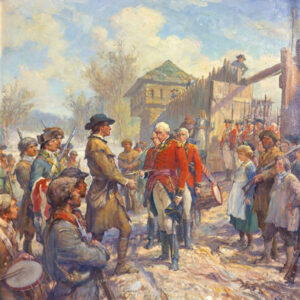
When a Native American raiding party attempted to return to the fort from the Ohio Valley, Clark’s men killed or captured all of them. The public tomahawk executions served upon five of the captives frightened the British, assuming that theirs might be a similar fate in Clark’s hands. When the British surrendered to Clark’s men, the Native Americans understood fully that they could no longer rely on the British to protect them from the Patriots. The British finally understood too, that they were no match for the determined patriots. The United States was finally free of the British.
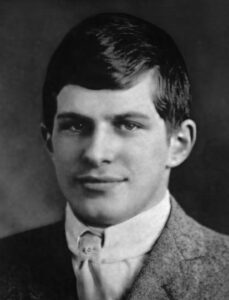
 They say that genius can be the closest thing to crazy, but I don’t really know how true that is. Sometimes I think that when a person is a genius, people drive them crazy. It’s the novelty of the thing, I suppose. People find out that the genius has a super high IQ, and they all seem to want something from them. Many people don’t really care about the genius as a person, just about how they might be able to make money off of them somehow. Not every inventor is a genius, but some of them are, as are some mathematicians, doctors, teachers, writers, and many other people too.
They say that genius can be the closest thing to crazy, but I don’t really know how true that is. Sometimes I think that when a person is a genius, people drive them crazy. It’s the novelty of the thing, I suppose. People find out that the genius has a super high IQ, and they all seem to want something from them. Many people don’t really care about the genius as a person, just about how they might be able to make money off of them somehow. Not every inventor is a genius, but some of them are, as are some mathematicians, doctors, teachers, writers, and many other people too.
Sometimes the demands placed on these geniuses gets to be so heavy, that they might just snap. I don’t mean that they might go insane, although some of them have. The thing that seems to happen most, however, is that they might just decide to disappear. Several geniuses have simply vanished,  including William Sidis (who graduated from Harvard at 16, only to go into hiding, going from city to city and job to job), JD Salinger (author of Catcher in the Rye, who left Manhattan in 1953 to live on a “90-acre compound” in Cornish, NH. He remained there until his death in 2010, at age 91, saying he loved to write, but publishing was a terrible invasion of his privacy), Ettore Majorana (a theoretical physicist was considered one of the most deeply brilliant men in the world by Enrico Fermi, creator of the first nuclear reactor. One day he drained his bank account and simply vanished), David Thorne (an architect received so much attention for his work on jazz giant Dave Brubeck’s house in 1954, that he changed his professional name in the ‘60s to Beverly Thorne, got an unlisted phone number, and didn’t “resurface” until the 1980s), and Nick Gill (who at 21, was the youngest-ever British chef to win a Michelin star. He seemed destined for a life of fame and fortune and was hailed as a culinary genius. One day he told his brother he was going to disappear, and to “please, not look for him,” never to be seen again).
including William Sidis (who graduated from Harvard at 16, only to go into hiding, going from city to city and job to job), JD Salinger (author of Catcher in the Rye, who left Manhattan in 1953 to live on a “90-acre compound” in Cornish, NH. He remained there until his death in 2010, at age 91, saying he loved to write, but publishing was a terrible invasion of his privacy), Ettore Majorana (a theoretical physicist was considered one of the most deeply brilliant men in the world by Enrico Fermi, creator of the first nuclear reactor. One day he drained his bank account and simply vanished), David Thorne (an architect received so much attention for his work on jazz giant Dave Brubeck’s house in 1954, that he changed his professional name in the ‘60s to Beverly Thorne, got an unlisted phone number, and didn’t “resurface” until the 1980s), and Nick Gill (who at 21, was the youngest-ever British chef to win a Michelin star. He seemed destined for a life of fame and fortune and was hailed as a culinary genius. One day he told his brother he was going to disappear, and to “please, not look for him,” never to be seen again).
It isn’t known, as to why these geniuses would decide that they no longer wanted to be a part of the world, nor 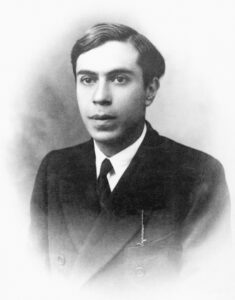
 are they to only people to do this by any means. Nevertheless, they seem to have one thing in common, their genius skill or knowledge seemed to take over their whole life, and people wouldn’t leave them alone, but rather hounded them unmercifully. I think I can understand how that would be enough to make someone want to disappear, but most people don’t actually go so far as to take that step. It is a rather extreme step to take, and for all we know some of these might have been killed or committed suicide. The sad reality for these genius minds is that the fame and constant pressure of celebrity was too much for them, and they just checked out, because the burden of knowledge was just too much for them.
are they to only people to do this by any means. Nevertheless, they seem to have one thing in common, their genius skill or knowledge seemed to take over their whole life, and people wouldn’t leave them alone, but rather hounded them unmercifully. I think I can understand how that would be enough to make someone want to disappear, but most people don’t actually go so far as to take that step. It is a rather extreme step to take, and for all we know some of these might have been killed or committed suicide. The sad reality for these genius minds is that the fame and constant pressure of celebrity was too much for them, and they just checked out, because the burden of knowledge was just too much for them.
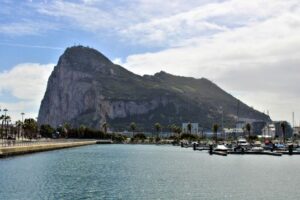 The Rock of Gibraltar is a unique rock located in the British territory of Gibraltar, near the southwestern tip of Europe on the Iberian Peninsula, and near the entrance to the Mediterranean. It is a huge monolithic limestone promontory that stands high above the water, although it actually sits on the edge of the land. During World War II, the rock was actually a war tool, and an amazing one at that. The British Army dug a maze of defensive tunnels inside the rock during the war, and the massive cliff is famous for the more than 30 miles of cleared space that served as a housing area for guns, ammunition, barracks, and even hospitals for wounded soldiers.
The Rock of Gibraltar is a unique rock located in the British territory of Gibraltar, near the southwestern tip of Europe on the Iberian Peninsula, and near the entrance to the Mediterranean. It is a huge monolithic limestone promontory that stands high above the water, although it actually sits on the edge of the land. During World War II, the rock was actually a war tool, and an amazing one at that. The British Army dug a maze of defensive tunnels inside the rock during the war, and the massive cliff is famous for the more than 30 miles of cleared space that served as a housing area for guns, ammunition, barracks, and even hospitals for wounded soldiers.
Recently, it was discovered that the rock held another, previously unknown secret use. Hidden in the famous rock is a secret chamber, known as the “Stay Behind Cave.” The cave measures 45 x 16 x 8 feet, and it has long been the site of a top-secret World War II plot called Operation Tracer. British Intelligence found out in 1940, that Hitler was planning to invade Gibraltar and cut off Great Britain from the rest of the British Empire. It was another part of their evil plan to take over the world, and they needed Britain out of the way to accomplish their objective. Once the British knew about this plot, the British Admirals suggested that a secret room be constructed within the Rock of Gibraltar, where six men would hide and observe from two small openings any movement they could see on the harbor. 
Six men were selected. One of the men even agreed to Operation Tracer before he was even told what it was. That fact doesn’t shock me as much as the other men knowing about it and still being willing to participate. The plan was to seal the six men inside the secret chamber with enough supplies to last them a year (some say the food stores could have actually carried the men for 7 years) was put into action. The plan had to take in any eventuality, so it was said that if one of the men were to die, they would be buried in the brick floor. The only way the men could escape back into the outside world would be if Germany was defeated before the year’s-worth of supplies ran out. Construction on the chamber began in 1941 and ended in 1942. It featured a radio room, 10,000 gallons of water, power generators, and other necessities.
The men were rigorously trained for the upcoming mission, but just before Operation Tracer could officially begin, Hitler changed course and started to focus more on the Eastern Front. The men were never required to begin their mission. The mission aborted, the equipment was removed and the section of the rock leading to the secret chamber was blocked off. The chamber was to be kept top secret. I suppose in case it was ever 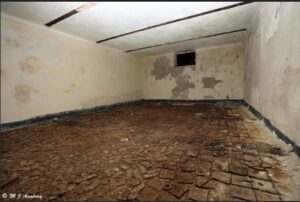 needed in a future war, but persistent rumors floated around about a secret chamber, and people continued to search for it. To me it is encouraging to know that it took people until December 26, 1996, to locate what they thought might be the chamber. That tells me that had the men been required to live in the room, they would probably have done so in absolute secrecy and safety. The suspicion about the room would persist for another decade, until finally, one of the six men who was supposed to partake in Operation Tracer confirmed that the room the explorers found in 1996, was indeed the room that was built for their top-secret operation all those years ago. It may be one of the best-kept secrets of World War II.
needed in a future war, but persistent rumors floated around about a secret chamber, and people continued to search for it. To me it is encouraging to know that it took people until December 26, 1996, to locate what they thought might be the chamber. That tells me that had the men been required to live in the room, they would probably have done so in absolute secrecy and safety. The suspicion about the room would persist for another decade, until finally, one of the six men who was supposed to partake in Operation Tracer confirmed that the room the explorers found in 1996, was indeed the room that was built for their top-secret operation all those years ago. It may be one of the best-kept secrets of World War II.

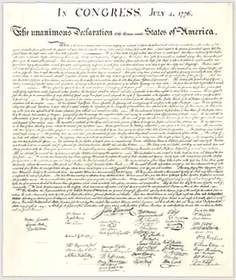 Most of us think of everything changing instantly when the Declaration of Independence was signed, and officially it did, but there was more to it than that. After years of oppression under the rulership of the British, the citizens of the 13 colonies had had enough. They formed the Continental Congress. The term “Continental Congress” most specifically refers to the First and Second Congresses of 1774–1781 and, at the time, was also used to refer to the Congress of the Confederation of 1781–1789, which operated as the first national government of the United States until being replaced under the Constitution of the United States. The 56 delegates to the Second Continental Congress represented the 13 colonies, 12 of which voted to approve the Declaration of Independence on July 4, 1776…our accepted day of Independence. The signing of the United States Declaration of Independence actually occurred on August 2, 1776, at the Pennsylvania State House in Philadelphia, which later to become known as Independence Hall. I suppose that a purist might insist that August 2nd should be our Independence Day, but the 56 delegates to the Second Continental Congress felt like once it was agreed upon, it was done. The signing was merely a technicality.
Most of us think of everything changing instantly when the Declaration of Independence was signed, and officially it did, but there was more to it than that. After years of oppression under the rulership of the British, the citizens of the 13 colonies had had enough. They formed the Continental Congress. The term “Continental Congress” most specifically refers to the First and Second Congresses of 1774–1781 and, at the time, was also used to refer to the Congress of the Confederation of 1781–1789, which operated as the first national government of the United States until being replaced under the Constitution of the United States. The 56 delegates to the Second Continental Congress represented the 13 colonies, 12 of which voted to approve the Declaration of Independence on July 4, 1776…our accepted day of Independence. The signing of the United States Declaration of Independence actually occurred on August 2, 1776, at the Pennsylvania State House in Philadelphia, which later to become known as Independence Hall. I suppose that a purist might insist that August 2nd should be our Independence Day, but the 56 delegates to the Second Continental Congress felt like once it was agreed upon, it was done. The signing was merely a technicality.
For the British government, neither of those days was acceptable, nor was the day they found out about the plan of the 13 colonies to gain their independence. In fact, that day…August 10, 1776, was the least acceptable day of all, because the British had no intention of giving the Colonies their independence…not without a fight anyway. When the news reached London, the British saw the conflict, centered in Massachusetts, as a local uprising within the British empire. Some Americans saw it that way too, but the reality is that the Declaration of Independence transformed the 13 British colonies into American states. King George III saw it as a colonial rebellion, but the Americans saw it as a struggle for their rights as British citizens. However, when Parliament continued to oppose any reform and remained unwilling to negotiate with the American rebels and instead hired Hessians, German mercenaries, to help the British army crush the rebellion, the Continental Congress began to pass measures abolishing British authority in the colonies. It was a brave move that would cost many of the 56 signers more than they could ever have imagined.
Following the signing of the Declaration of Independence, five of the signers were captured by the British and labeled as traitors. They were tortured before they died. Twelve of them had their homes ransacked and burned. Two lost their sons, who served in the Revolutionary War. Another two had sons captured, and nine of the 56 fought and died from wounds or hardships of the Revolutionary War. These men knew the risks they were taking. They knew that signing the Declaration of Independence very likely would cost them their lives. Nevertheless, they also knew that they couldn’t let the tyranny continue any longer. They had come to America to escape the tyrannical British government, and they could not allow the British government to make them slaves again. They signed, knowing they would likely die, but they saw no other way. These men weren’t soldiers…so, who were they. Twenty-four were lawyers and jurists. Eleven were merchants. Nine were farmers and plantation owners. All of them were men of means and well-educated, but they signed the Declaration of 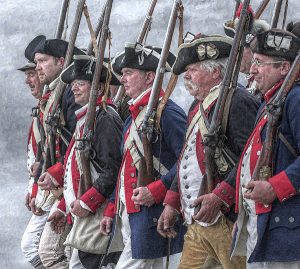
 Independence, knowing that the penalty would be death if they were captured. These men had their livelihood threatened and destroyed, their homes confiscated and sold, and some were threatened so badly that they had to constantly move their families from place to place. Still, not one of them saw this as one option of many. When it came to taking their country back, they saw it as the only option.
Independence, knowing that the penalty would be death if they were captured. These men had their livelihood threatened and destroyed, their homes confiscated and sold, and some were threatened so badly that they had to constantly move their families from place to place. Still, not one of them saw this as one option of many. When it came to taking their country back, they saw it as the only option.

